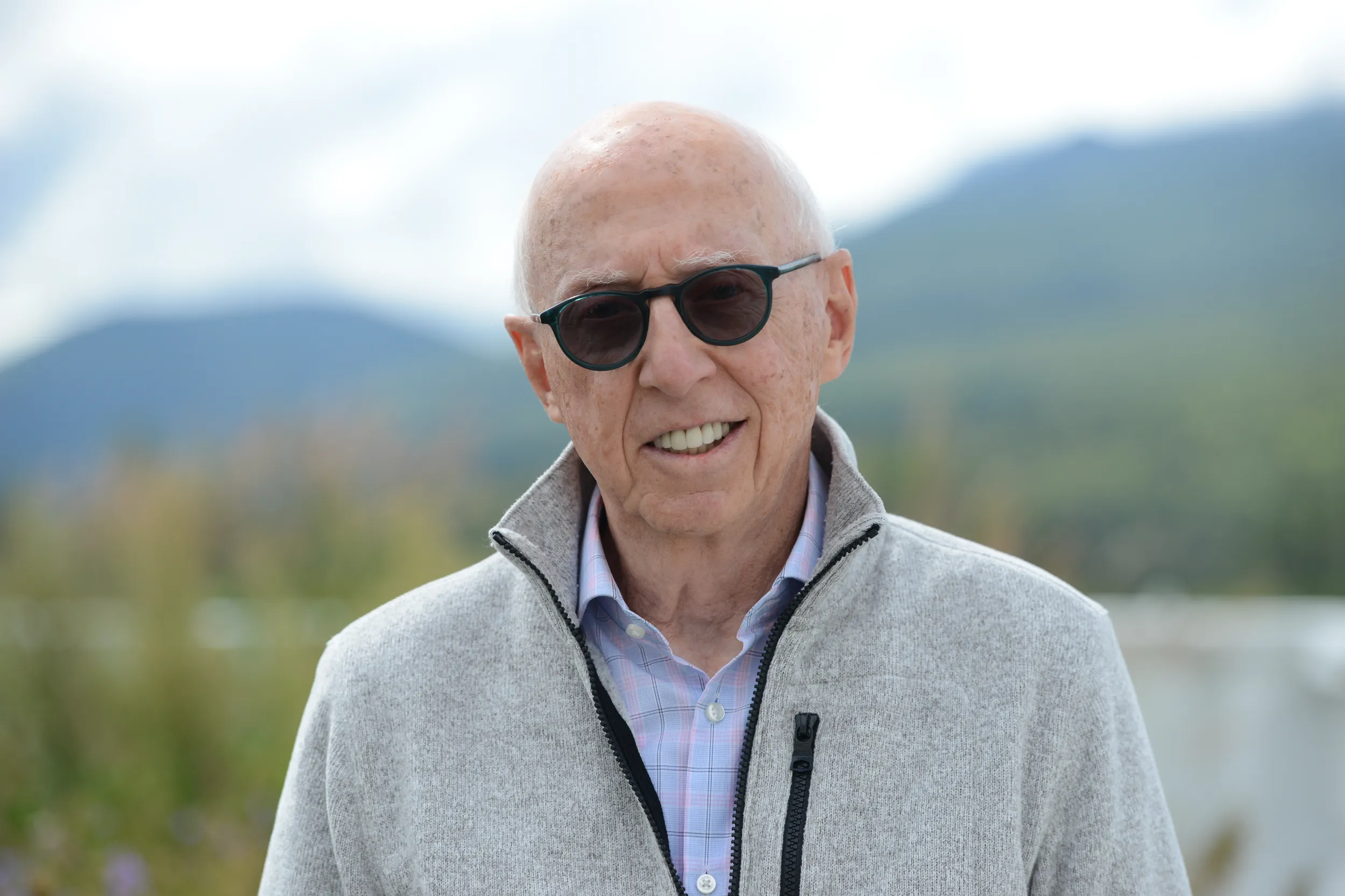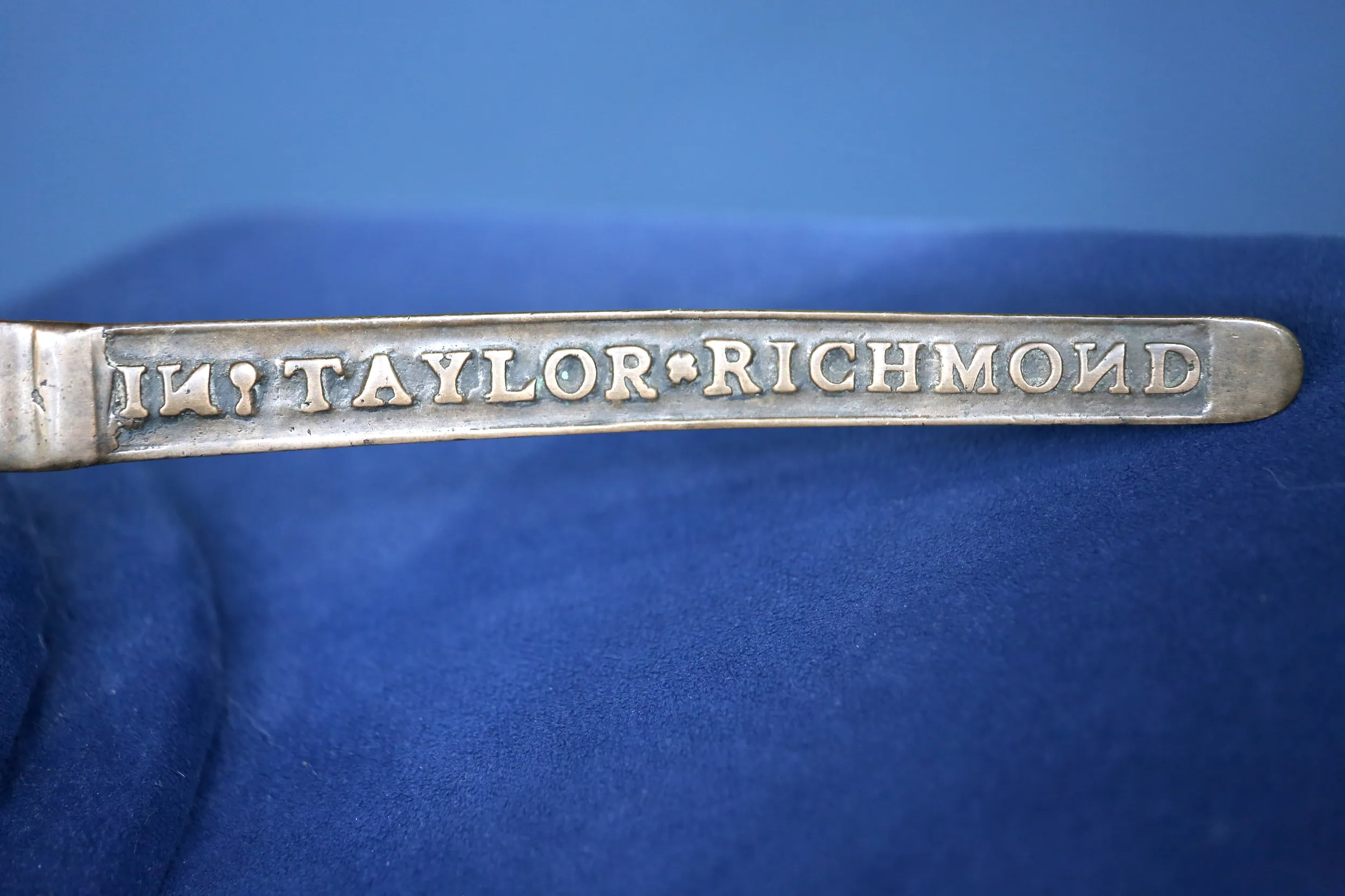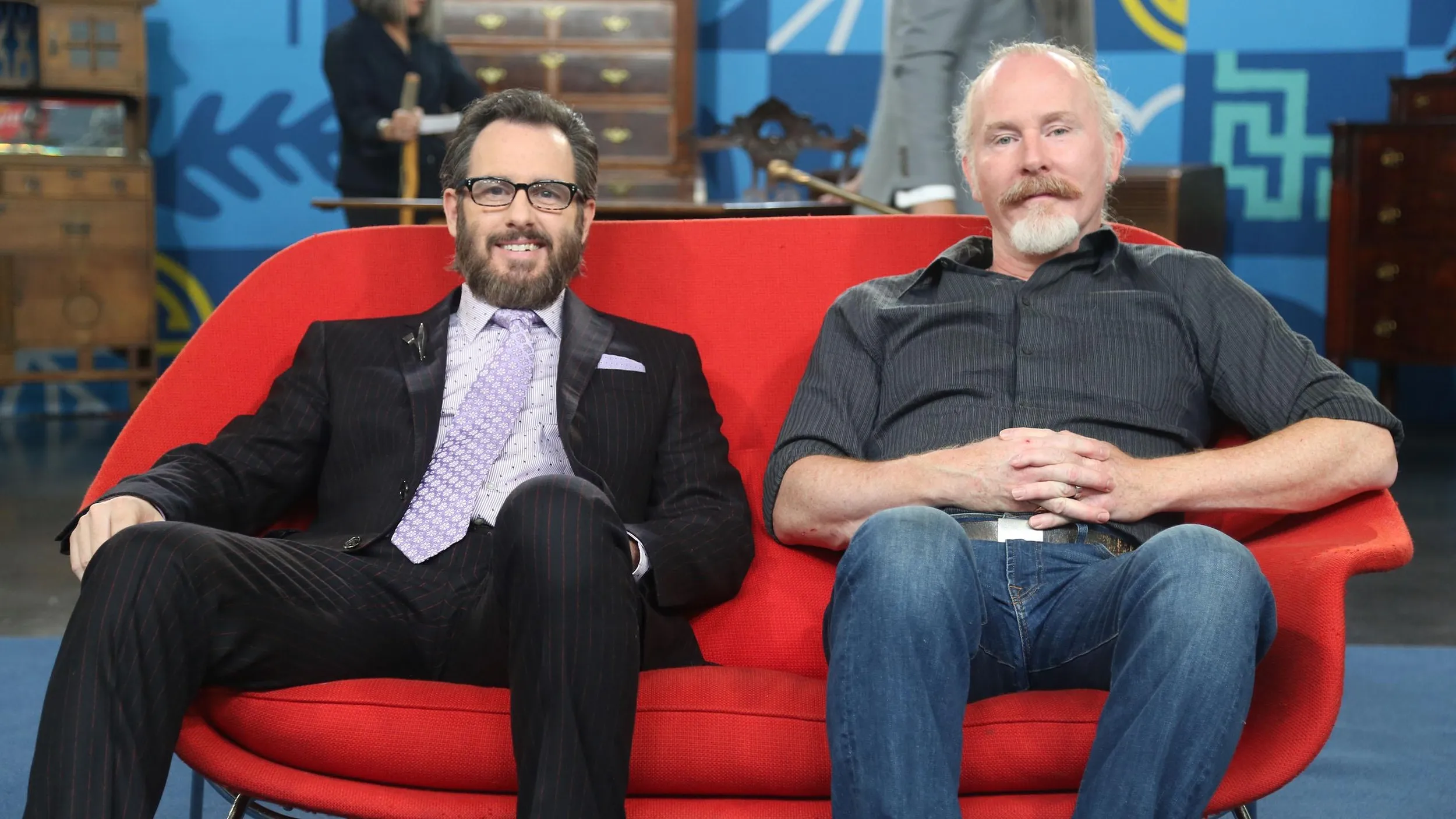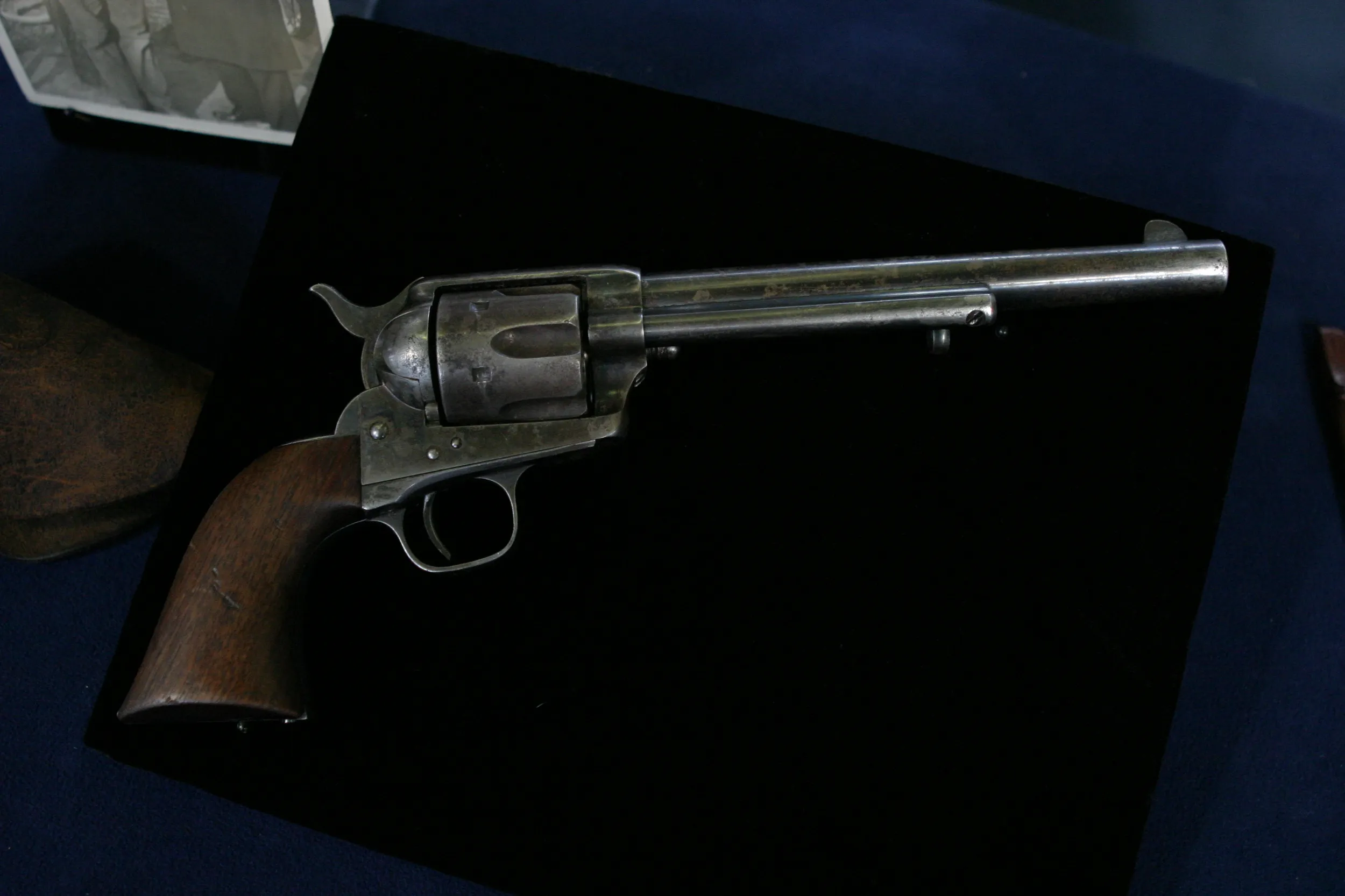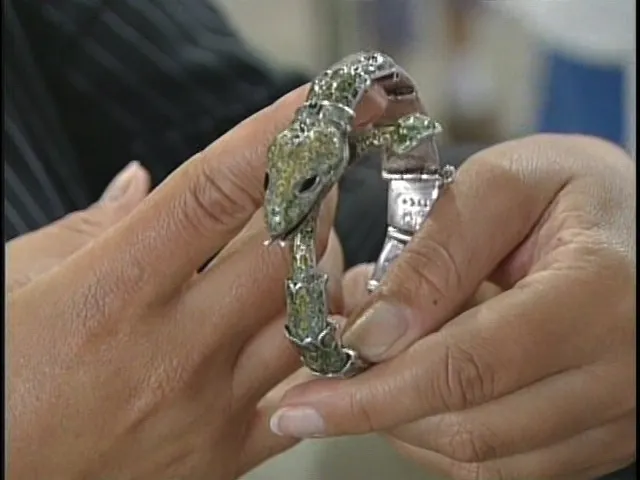GUEST: This is an early American cooking vessel, probably used by the early colonists, and it comes from Virginia. I went to a sale of a lady's estate. She ran a small shop in Multnomah Village. When she passed away, I went to her estate sale, and I purchased it from the estate.
APPRAISER: And that's right around here in Portland?
GUEST: Yes, Multnomah Village is part of Portland, and it's right here in our community.
APPRAISER: And what did you pay for it?
GUEST: I was called up after the sale was over, because I didn't take it home with me on either day of the sale. I put a bid on it, and I was called, and I paid $75 for it.
APPRAISER: How long ago did you go to this estate sale and acquire this?
GUEST: I probably bought this about ten to 12 years ago.
APPRAISER: And where do you have this? Do you have this in a fireplace?
GUEST: I have it sitting next to my fireplace.
APPRAISER: From the side view, it looks like somewhat of an ordinary cooking vessel on three legs that's cast in bronze. We see a name, Taylor Richmond. And then I'm going to swing it around, and you see Virginia. This is all cast into the piece. All original, all, as you said, very, very early. This pot dates to about 1790, and it's made by John Taylor. John Taylor had a foundry in Richmond, Virginia, and he was very early on. Pots like this typically were made in Northern cities-- Philadelphia, Boston, New York, Newport, Rhode Island. It's rare to find a Southern-made piece like this. He did tea kettles, mortars and pestles, anything that he could cast in metal. And these pots, they were called "posnets," P-O-S-N-E-T. It's an early English term for a small pot. My immediate reaction to why this back leg may be longer, because if you're using it-
GUEST: For sauces.
APPRAISER: -for a small amount, it would tip it forward so that it would accumulate in the front end.
GUEST: I think you're right.
APPRAISER: If you're only making a small batch.
GUEST: Right.
APPRAISER: You would put this in the fireplace, and you would melt butter and make sauces. And during the Colonial Revolutionary War, they would actually melt lead to make the bullets. Do you have any sense of today's value?
GUEST: Not really, I don't. But I know that because of its heritage and where it came from, Virginia, that it must be worth something. This would be coveted by so many different types of collectors. I would put a retail value, and feel very safe in doing it, of in the neighborhood between $10,000 and $15,000.
APPRAISER: Oh, my goodness, wow. Well, that's very exciting. I hadn't any idea that it would be worth that much.
